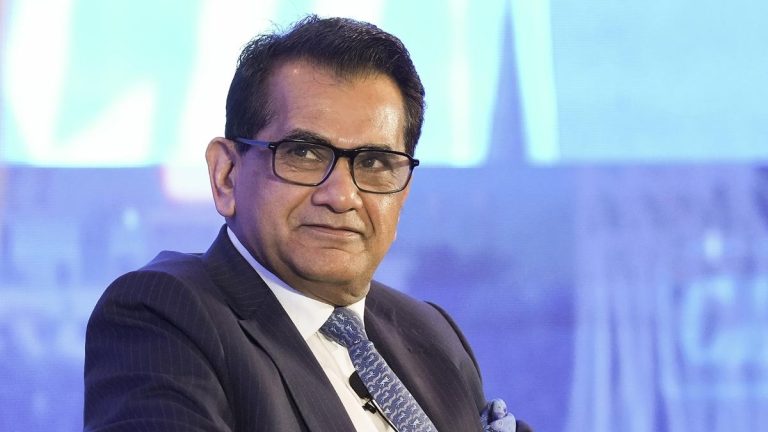Despite strong macroeconomic fundamentals and steady returns from Indian bonds over the past two years, foreign investors have begun paring their exposure.
Pal believes this trend is largely driven by tactical profit booking and narrowing interest rate differentials between India and the US, rather than any structural concern.
He explains why India’s bond market remains fundamentally strong and why these outflows shouldn’t raise red flags for investors. Edited Excerpts –
Kshitij Anand: Let us start with the corporate bond segment. Why is the three- to six-year corporate bond segment seen as an attractive investment opportunity right now?
Puneet Pal: We see the three- to six-year AAA PSU segment as an attractive opportunity simply because we foresee that there will not be any rate cuts over the next six months, at least until December.
The RBI has indicated that there is limited room for monetary policy to support growth going forward, and they changed the monetary policy stance to neutral from accommodative in the June 6 policy.
This makes us believe that there will be a status quo on policy rates, limiting the duration play in terms of overall returns from a fixed income perspective. This makes accrual an attractive opportunity.
When we talk about AAA spreads, they are currently around 60 to 70 basis points over corresponding maturity G-Secs, which I would say is a pretty decent or attractive spread.
Historically, in a rate-cutting cycle followed by abundant liquidity in the banking system, we have seen the spreads compressing to around 40 basis points.
So, there is still some scope for the spreads to come down, which can lead to better returns. That is why we see this three- to six-year segment in the AAA PSU space as a better risk-adjusted investment opportunity.
Click Here for Livestream – Why FPIs Are Selling Indian Bonds
https://economictimes.indiatimes.com/markets/etmarkets-live/why-fpis-are-selling-indian-bonds/streamsrecorded/streamid-npnha4vgz9,expertid-148.cms
Kshitij Anand: You did mention that the RBI is probably not cutting rates anytime soon, but are there any other reasons why the current spread between AAA PSU bonds and G-Secs is historically attractive?
Puneet Pal: Yes, because the RBI has committed to maintaining adequate and surplus liquidity to the tune of 1% of the NDTL.
This means that liquidity in the overall banking system should be in excess of ₹2.5 lakh crore, which is a trigger for the spreads to come down over a period of time, as money will follow higher yields.
Considering that AAA PSUs in the five-year space are trading anywhere between 6.75% to 6.85%, and the corresponding G-Sec yields of the same maturity are around 6.10% to 6.15%, it makes sense that one can enjoy a higher accrual as the rate cuts take a pause.
Overall, the high accrual will lead to higher returns, and if there is spread compression — which we do expect over the next two quarters — that will add to the higher accrual.
Kshitij Anand: You talked about the liquidity the RBI is going to maintain, but how does the RBI’s stance on liquidity and rate transmission influence short-term bond investment strategies?
Puneet Pal: We have already seen banks reducing their loan rates as well as deposit rates, so rate transmission is happening. It is crucial for the RBI to maintain this excess liquidity for rate transmission to continue, which is why the RBI is committing to maintaining surplus liquidity in the banking system.
If we look at the durable system liquidity, which includes government balances, it is currently in excess of ₹5.5 lakh crore.
As and when government spending picks up, we are likely to see more liquidity flowing into the system, which means that rate transmission through banking channels will gain further momentum.
Kshitij Anand: Now, in case someone is interested in investing right now, what kind of investment horizon would you recommend for those looking to allocate to short-term or corporate bond funds at this point in time?
Puneet Pal: We would definitely advocate that anyone investing right now should do so with a minimum horizon of 12 to 18 months. That is the bare minimum one should keep in mind when investing in short-term or corporate bond funds.
When we talk about better accruals or spread compression, one needs to stay invested for at least 12 to 18 months to fully benefit from that. So, I would recommend a 12- to 18-month investment horizon for short-term or corporate bond funds.
Kshitij Anand: Let me also get your perspective on what’s happening on the international front. How have global central banks—like the US Fed or the Bank of Japan—responded to the recent geopolitical uncertainty? We’ve seen the US Fed holding off on rate cuts while the BOJ has slightly raised interest rates recently. How are you interpreting all of this?
Puneet Pal: That’s a very pertinent question, and it’s going to remain relevant for the foreseeable future. I would say that every central bank is primarily reacting to its domestic inflation and growth dynamics.
For example, in India, the RBI has emphasized that its monetary policy decisions are mostly driven by domestic factors—specifically, the growth-inflation dynamic.
This is also true for other central banks, like the US Fed and the BOJ. In Japan, inflation has risen after a long time, and their withdrawal of accommodation—through rate hikes or reduced bond purchases—is a response to that higher inflation.
Similarly, in the US, we are seeing relatively strong economic growth, and inflation is not yet coming down to the Fed’s target. This is why the Fed has not cut rates in the current calendar year, although they did cut rates last year.
They are waiting for more subdued inflation before embarking on another rate-cutting cycle. While the Fed is projecting more rate cuts ahead, we will have to wait and see how the growth-inflation dynamics evolve in developed economies.
But to directly answer your question: every central bank is focused primarily on its domestic growth and inflation dynamics. While they are also monitoring geopolitical developments, those tend to take a backseat.
The foremost consideration in their monetary policy decisions is domestic demand and inflation trends.
Kshitij Anand: Let us also get your viewpoint on what FPIs or FIIs are doing at this point in time. In fact, we are seeing FPIs continuing to sell Indian fixed income assets despite improved macro indicators. Could you shed some light on what’s happening right now and how you are interpreting this trend? FPIs continued to sell Indian fixed income with more than US$2 bn of outflows in June.
Puneet Pal: We have seen a decent amount of inflows in 2023 and 2024. In both these years, there have been significant inflows into fixed income from FPIs.
If we talk about the last quarter, from April to June, we have seen some outflows. This could be a result of profit booking—taking some profits off the table—because we have witnessed decent returns from Indian fixed income assets over the past two years.
For instance, the 10-year benchmark yield has come down from a high of around 7.60% in 2022 to a low of around 6.25% just a fortnight ago. So, FPIs who have invested over the last two years have seen good returns on their portfolio investments.
This could very well be a case of profit-taking, and also the fact that the US-India interest rate differential has narrowed, leading to some capital reallocation.
However, we believe it’s more about profit booking rather than anything fundamentally concerning. As you rightly pointed out, our macro indicators continue to remain strong and stable. Going forward, we expect this stability to continue.
So, from a macroeconomic standpoint, India is in a sweet spot, and there’s no reason for concern. It appears to be more of a tactical reallocation after a strong rally in Indian bonds over the last two years.
Kshitij Anand: So, no red flags there for the Indian market?
Puneet Pal: Yes.
(Disclaimer: Recommendations, suggestions, views, and opinions given by experts are their own. These do not represent the views of the Economic Times)








